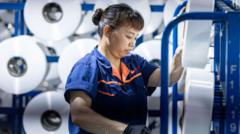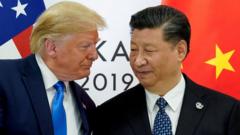In recent developments, Malaysia has unveiled an ambitious plan to solidify its position in the global semiconductor industry, particularly in high-tech chip manufacturing. Once primarily known for assembling and testing semiconductors, Malaysia has set its sights on developing cutting-edge technologies essential for artificial intelligence (A.I.). The intention is to follow in the footsteps of advanced semiconductor manufacturers like Taiwan.
Located in Penang, Malaysia is home to several major American tech firms, such as Intel and AMD, whose investments have provided a substantial boost to the local economy. This partnership has transformed Malaysia into a significant exporter of semiconductors to the United States, playing an integral role in supplying components for a multitude of devices including laptops, smartphones, and medical equipment.
However, Malaysia’s ambitions are confronted with complexities brought about by President Trump's trade policies. Previously viewed as a beneficiary of the U.S. strategy to prevent advanced chip technologies from reaching competitors, Malaysia is now facing uncertainty. The Trump administration has recently introduced tariffs that complicate export dynamics, including a sudden consideration of up to a 25 percent levy specifically targeting semiconductor imports deemed a risk to national security.
These trade tensions have introduced an atmosphere of unpredictability, as Malaysian manufacturers and government officials navigate the implications of U.S. tariffs on their intended growth. Despite ongoing negotiations, the situation remains fluid, leaving manufacturers anxious about future export tariffs that could undermine Malaysia’s long-term goals.
In this challenging landscape, a path forward will require resilience and strategic adaptation from Malaysian businesses, who must contend with external pressures while striving for technological advancement in the global semiconductor race.






















